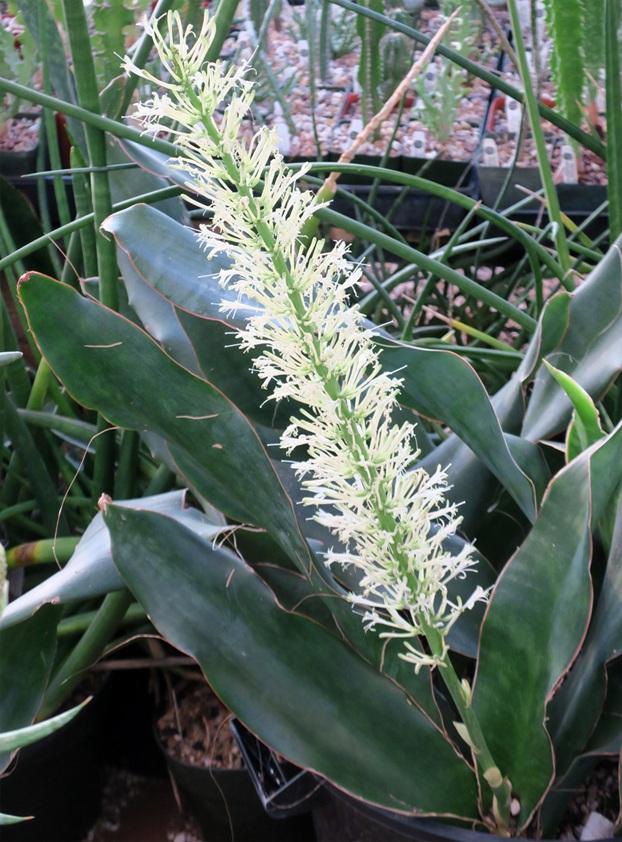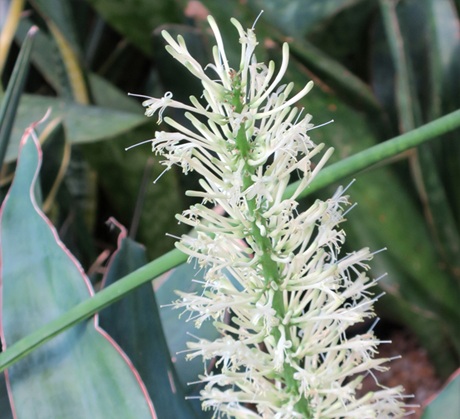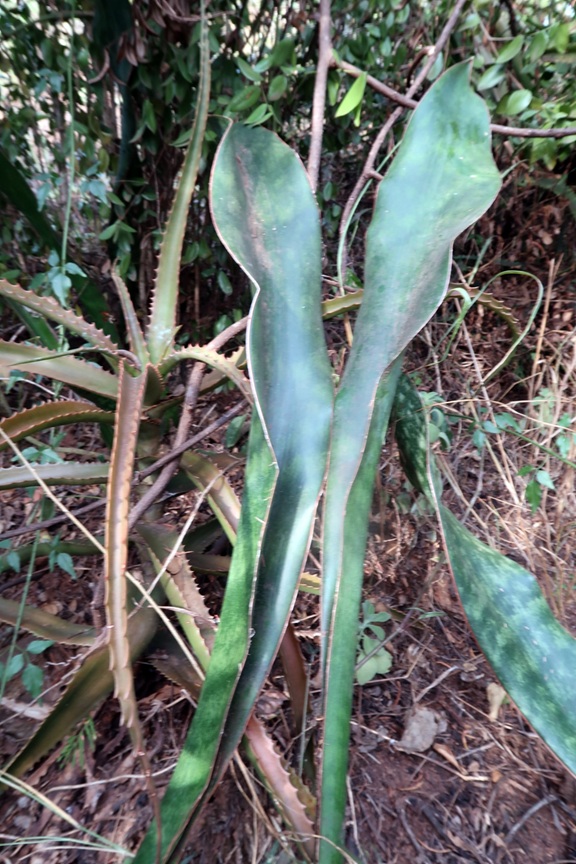| Protologue: |
Sansevieria 51: 22-25. |
| Etymology: |
The epithet honors Ziad Al-Witri, a British citizen who helped to establish the International Sansevieria Society and helped recover this species from a European botanical garden. |
| Subgenus: |
Sansevieria |
| Group: |
Sansevieria masoniana |
| Distribution: |
Southwestern Kenya in the vicinity of Homa Bay, Lake Victoria. |
| Brief Description: |
The acaulescent, rhizomatous, and clumping perennial has 3-4 leaves in a rosette. The dull dark green leaves are spreading, flexible, and 75-120 cm long and 17-26 cm wide. The smooth leaves are broadly U-shaped and lack a central channel, and both surfaces have lighter green spots and numerous lineaments. The leaf margin is red-brown with a shredding whitish edge. The inflorescence is up to 95 cm tall and simple with 2 – 4 flowers per cluster and with a long exserted style. |
| Similar Species: |
Sansevieria alwitrii was known as ‘Leiden BG 98-263’ for decades, although it originated from the now defunct collection of Wageningen University in the Netherlands, not the Leiden Botanical Gardens. Sansevieria masoniana from an unknown locality in the Congo also has wide leaves, but they are much shorter and are more highly decorated with markings. Sansevieria alwitrii cannot be confused with any other species in the genus owing to its long and wide, dark-green leaves. |
| |
| |

Sansevieria alwitrii flowering in cultivation.
|
| |

Closeup of Sansevieria abyssinica flowers showing the long styles and strongly reflexed petals.
|
| |

Sansevieria abyssinica in habitat near Homa, Tanzania. Photograph by Bhwire Bhitala.
|

